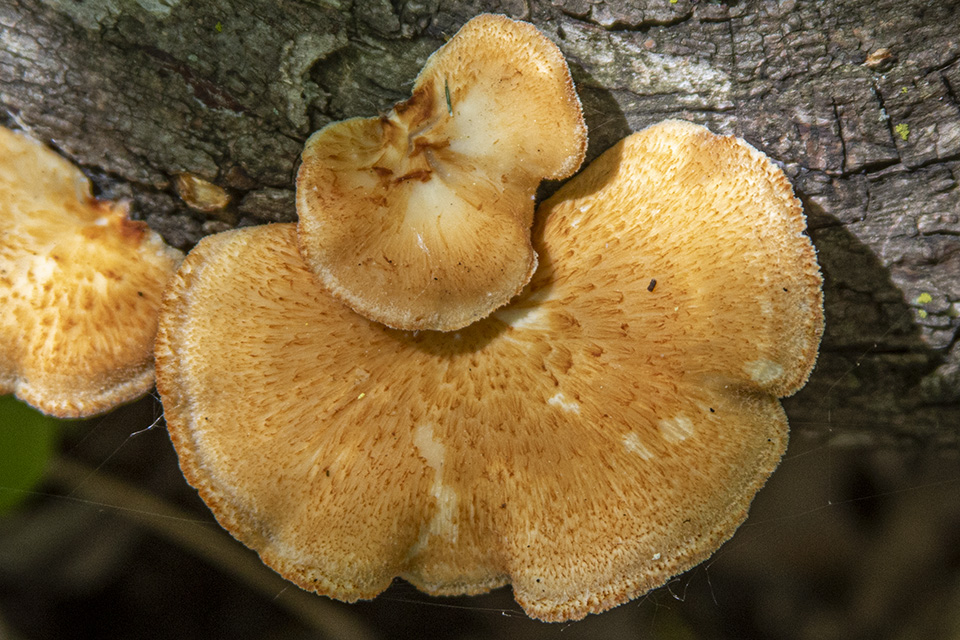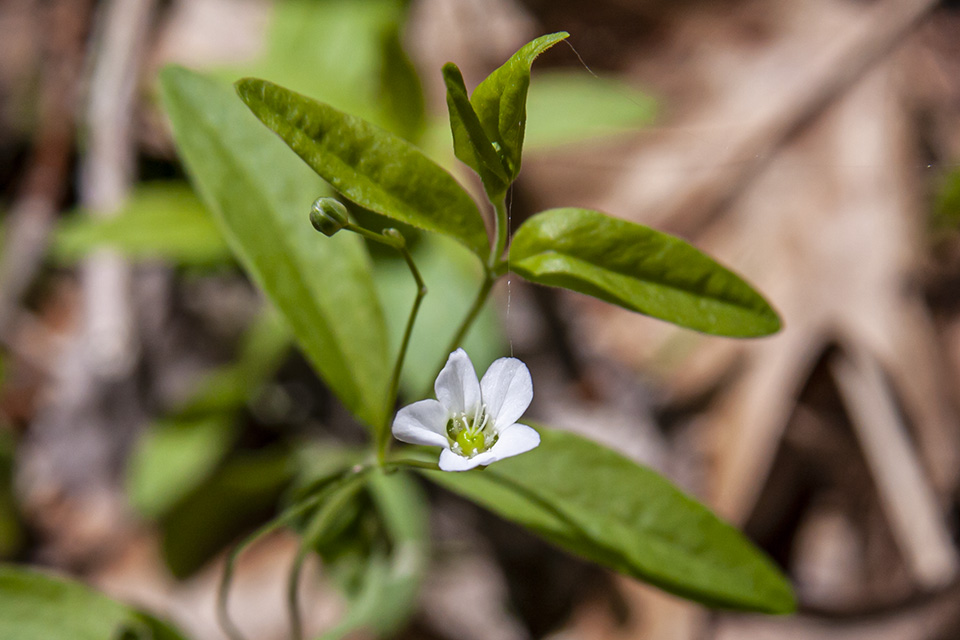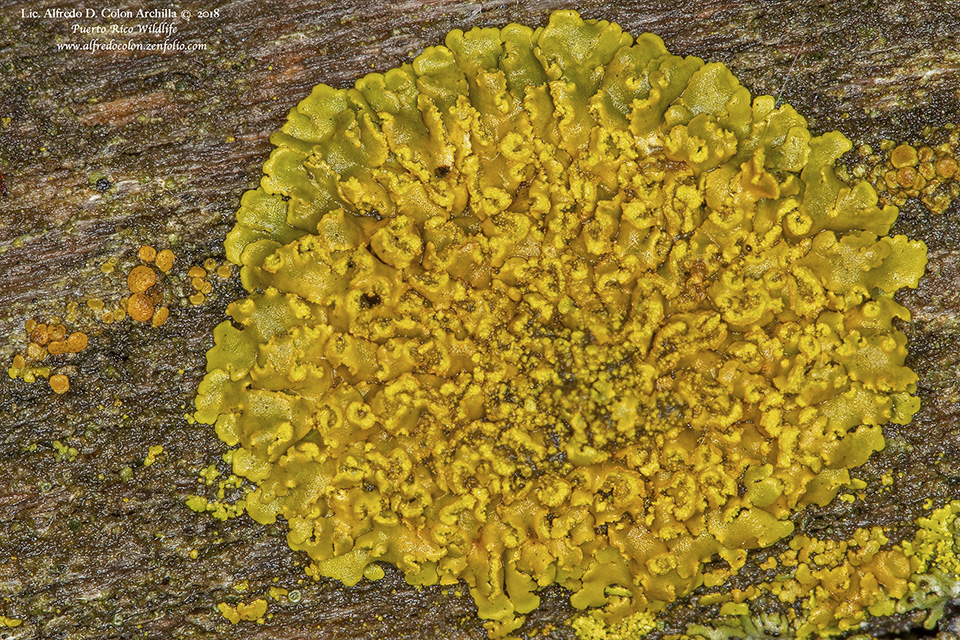
Hexagonal-pored Polypore (Neofavolus alveolaris) is one of the first mushrooms to appear in woodlands in the spring. It occurs in Europe, Japan, and North America east of the Rocky Mountains. In the United States it is especially common east of the Great Plains. It first appears in May, the same time as morels, and persists through November. It grows on fallen branches and small logs of hardwoods.
The fruiting body is a semicircular to kidney-shaped, shelf-like bracket. When it first appears in late spring it is orange or orangish. It is at this stage that it is most easily recognized. The upper surface is covered with minute scales or delicate fibers. As the season progresses it fades to yellowish or nearly white. It usually has a short, stubby laterally positioned stalk. The pore surface is white to pale yellowish and is covered with conspicuous, large, diamond-shaped or six-sided pores. The pores are not all hexagonal, as the bracket’s common name suggests.
Hexagonal-pored Polypore is not poisonous but the bracket is too small and the flesh is too tough to be edible.
http://www.minnesotaseasons.com/Fungi/Hexagonal-pored_Polypore.html




